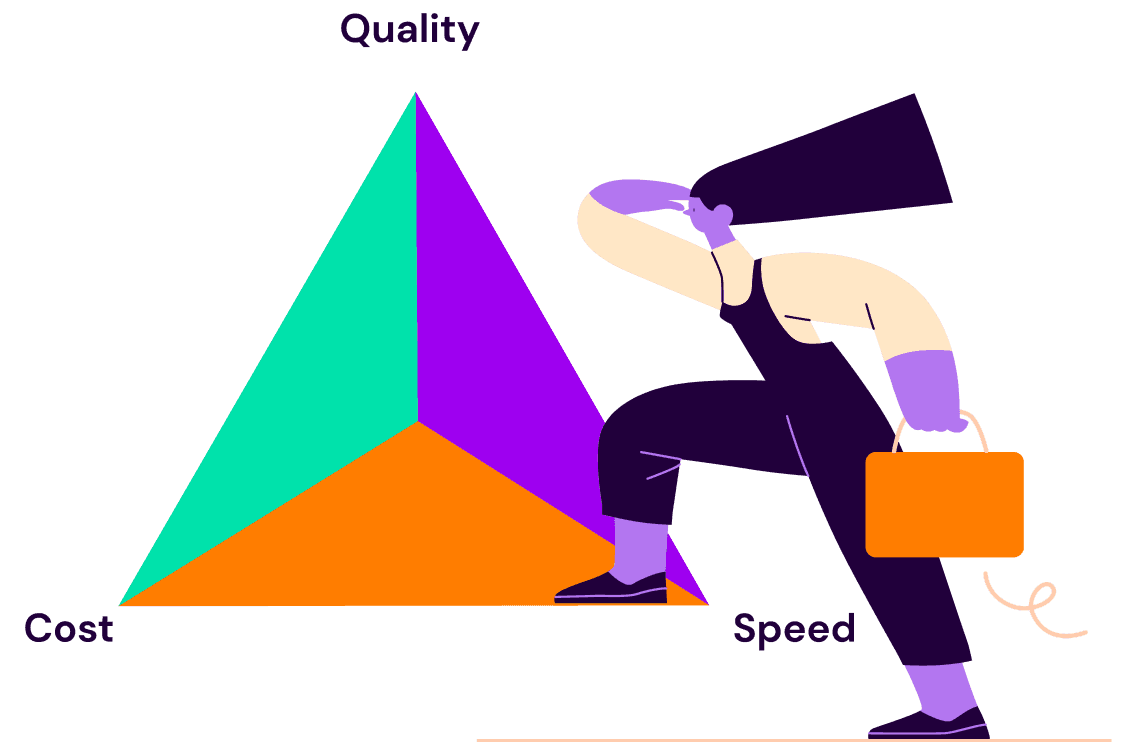
Back to blogs
Industries across the US are dealing with massive challenges affecting the labor market: talent engagement, workplace diversity, employee well-being, and perhaps the biggest of them all, a staff shortage.
Take the healthcare industry for example. With more than half of people working in it, it’s the largest industry employer in the country. But that doesn’t mean they’re immune to the workforce shortage. In fact, they’ve been heavily impacted by it.
So, what’s actually going on in the labor market? And what can HR professionals do about it?
A panel of HR leaders addressed this topic on the "Moving from Digital Disruption to Industry Reinvention" Human Resource Executive webinar. Although the webinar focused on the healthcare industry as its prime example, the lessons learned from these experts are highly relevant and applicable no matter your industry.
A Digital Evolution in HR & Beyond
Kicking off the webinar with soon-to-be-published research was global industry analyst Josh Bersin and his Senior Vice President of Research at The Josh Bersin Company, Kathi Enderes. Their research begins with exploring the digital evolution in HR. And to fully grasp how they recommend approaching the workforce shortage, it’s important to understand this evolution.
While the newer members of the workforce might not believe it, the early 2000s were actually a period where the internet was still somewhat new. We were in a digital adoption phase, learning how digital tools and systems could affect and improve how we work and live. Websites gave way to databases, which gave way to apps… all of which provided an important foundation.
Later in that decade, we moved into the digital transformation phase, where we started to transform customer and employee experiences. We used new design and engineering skills, agile thinking, and mobile capabilities to achieve never-had-before experiences.
In 2017, we hit digital disruption. Organizations started changing their products, services, and operating models to adapt to new opportunities. Toward the end of this phase, we faced one of the biggest challenges and opportunities in HR when the pandemic began. The response: developing new work models, particularly remote work models, to meet workplace needs.
And today, we’re in an industry reinvention phase. Companies are moving into new business models completely. Industries are merging and boundaries are blurring together. New industries, like the metaverse and cryptocurrency, have been popping up. Career pathways and talent models are shifting significantly, not just to meet workplace needs—but workplace demands.
What’s happening today, while part of natural workplace evolution, is also problematic. It’s leading to a staffing shortage, and many industries have been hit hard.
Closing the Employment Gap
With all that said, the million-dollar question is: How do we close this gap? Is it even closable?
The experts say yes, but doing so will require actions that emphasize collective efforts over siloed functions. Pouring effort into a single siloed area, such as recruiting for example, would only fill about 20% of that gap. But combining recruiting and other actions into a collective approach can give you the best chance possible to close the employment gap.
Consider a collective effort that takes four actions into consideration:
Continue recruiting.
A strong recruiting strategy can help support closing the employment gap. But like we said, doing so on its own won’t get you there completely—not even a quarter of the way. So, what does a strong recruiting strategy look like?
It can look like a lot, but there are two things in particular that will promote strong recruiting, no matter what your company or industry: employment brand and the candidate experience. Investing in an inclusive, approachable, and engaging candidate experience will inherently build up your employment brand reputation. And organizations with positive employment brand reputations are the ones that’ll win in the war for top talent.
2. Create unique retention plans.
How do you keep your top talent happy, engaged, and employed at your company? You create good employee experiences that make them want to stay. This can be in the form of mentorship programs, competitive compensation, effective communication, or training and development opportunities. And as we’ve evolved into new work models, many employee retention programs offer remote-first working.
But what about industries, like healthcare, that can’t really take advantage of remote-first work? Things like flexible working hours, subsidized or on-site child care, or wellness perks are all options. The key is to identify what your talent pool wants.
Shaun Smith is the Senior Vice President and Chief People Officer at New York-Presbyterian Hospital. One question he and his team ask to start retention off on a good foot is: What does it mean to onboard people in a way that’s engaging to them? It’s important to remember that retention begins from the moment they’re an employee.
3. Reskill top talent.
Say your company is running fast and effectively with both recruiting and retention. That’s great—but even those two together won’t close the employment gap. In fact, at that point, you’re still not even halfway there. It’s time to think about reskilling top talent.
How can you develop new career pathways for your most skilled workers? And how can you bring net-new people into your industry?
Greg Till is the Executive Vice President and Chief People Officer at Providence Health. His organization partners with a large corporation that’s digitizing some warehouse operations and wants to do their part in helping to find new jobs for their warehouse workers. Through the partnership, the corporation pays to help educate (or reskill) those workers to become nurses or healthcare administration employees—avoiding the potential for job losses or lower-paying wages.
4. Redesign your work models.
The last piece to your puzzle is perhaps the most important one: redesigning your work models. How can you create new work models to bring in automation and offload work that’s not really taking advantage of someone’s skills?
For example, think about a nurse’s job. Studies have shown that only 30-40% of a nurse’s day is done on actual nursing tasks. That means more than half of what they do each day are things like paperwork or discharge procedures that don’t actually contribute to a patient’s care or experience.
Olesea Azevedo is the Senior Vice President and Chief People Officer at AdventHealth. As a consumer-driven organization, they keep the patient at the center of everything. The talent shortage obviously makes this challenging to do. To solve for this, they’ve started focusing on creating a team-based model that includes a pilot program with virtual nursing. They have a virtual nurse come in to help their clinical teams with certain tasks that don’t have to be done in the room, freeing up their on-site nurses to focus on patient care.
See us in action
Learn how SeekOut unifies people data to help organizations reach their talent goals
Request a demo




